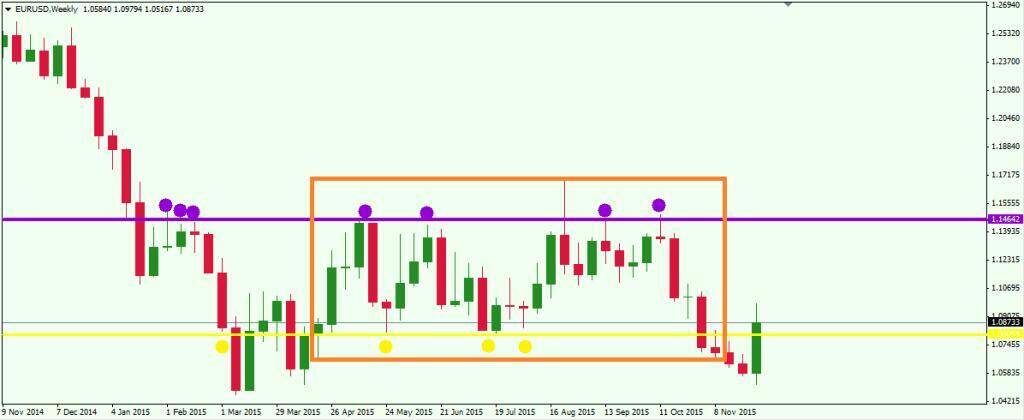
The reports reflect a firm’s financial health and performance in a given period. Quantitative analysis is inclined towards statistics, reports, and data. It is solely based on its financial statements, quarterly performance, balance sheets, debt, cash flowCash FlowCash Flow is the amount of cash or cash equivalent generated & consumed by a Company over a given period. It proves to be a prerequisite for analyzing the business’s strength, profitability, & scope for betterment. It involves analyzing numbers, ratios, and values to understand the price of the shares and the company’s overall financial health.
Ultimately, a fair value is arrived at after comparing several models and ratios. Bottom-up analysis typically starts by looking at the company’s financial statements to understand its cash flows, income, assets and liabilities. Analysts use the information in a company’s publicly filed annual 10-K report and its 10-Qs, the financial performance reports all public companies file to the U.S. These reports and filings disclose net income, earnings per share (EPS), net sales, and other numbers that analysts find useful in evaluating a company’s performance. Analysts look at the following three financial statements for the crucial financial information used in quantitative evaluation.
Technical analysis, on the other hand, bypasses the underlying company’s fundamentals and instead looks for statistical patterns on stock charts that might foretell future price and volume moves. The idea here is that stock prices already reflect all the publicly available information about a particular company, so there’s nothing to be gained from poring over a balance sheet. Given the focus on price and volume moves, traders have traditionally used technical analysis for shorter-term trades. Fundamental Analysis in simple terms in the art of evaluating any business to its basics and getting an accurate picture of how financially healthy and sustainable it is. It involves studying a company’s potential for future growth by considering various micro and macroeconomic factors.
What Are the 3 Layers of Fundamental Analysis?
Once a scenario for the overall economy has been developed, an investor can break down the economy into its various industry groups. By integrating both approaches, investors can achieve better investment results. A weekly illustration of trends and potential patterns to help analyze market developments.
What is a fundamental analysis approach?
Fundamental analysis is a method of determining a stock's real or ‘fair market’ value. Fundamental analysts search for stocks currently trading at prices higher or lower than their real value. If the fair market value is higher than the market price, the stock is deemed undervalued, and a buy recommendation is given.
Most of the information used in fundamental analysis is widely available. To gain an edge with fundamentals, you need to find unique datasets that aren’t available to most investors. Other qualitative factors investors consider include the company’s corporate governance rules and its level of financial transparency.
Where have you heard about fundamental analysis?
In the future it is likely that the various forms of analysis will increasingly be combined. The field of quantitative investing has rapidly gained recognition in the asset management industry due to its more scientific approach. Technology now allows fundamental, technical and quantitative fundamental analysis approach analysis to be effectively combined, and tested. Increasingly, behavioral finance and market sentiment are being incorporated in algorithmic trading strategies. And, new technologies like artificial intelligence and big data can also enhance all three forms of analysis.
They may have invested in new technology or have much more efficient systems. Looking over press releases and reading company reports can provide insights into what the company is doing. It might also be that Coca-Cola simply sells more products than its competitors, so it’s important to review any reports and releases and conduct a fundamental analysis carefully. Fundamental analysis relies on using financial ratios drawn from data on corporate financial statements to make inferences about a company’s value and prospects.

While most Wall Street analysts focus on the fundamentals, many firms typically employ technical analysts as well. Titan Global Capital Management USA LLC (“Titan”) is an investment adviser registered with the Securities and Exchange Commission (“SEC”). By using this website, you accept and agree to Titan’s Terms of Use and Privacy Policy. Titan’s investment advisory services are available only to residents of the United States in jurisdictions where Titan is registered. Nothing on this website should be considered an offer, solicitation of an offer, or advice to buy or sell securities or investment products. Any historical returns, expected returns, or probability projections are hypothetical in nature and may not reflect actual future performance.
Fundamental analysis is a method of evaluating the intrinsic value of an asset and analysing the factors that could influence its price in the future. This form of analysis is based on external events and influences, as well as financial statements and industry trends. The bottom-up approach is primarily concentrated on various microeconomic factors such as a company’s earnings and financial metrics. Analysts who use such an approach develop a thorough assessment of each company to gain a better understanding of its operations. Coca-Cola employees generate about twice as much revenue as employees for comparative companies. This might warrant a deeper investigation into what Coca-Cola is doing differently.
While fundamental analysis provides a more well-rounded view of the market, it is possible for negative economic, political or legislative changes to surprise markets. A 2018 research study by Raúl Navas, Ana Paula Matias Gama, and Sónia R. Bentes investigates the significance of FA in understanding the worth of a company. The study concludes that the investors can use FA scores to create a portfolio that is likely to yield them remarkable returns within a year or two. The research also adds to the understanding of mispriced stocks in the European capital market.
Purchasing power parity in Forex and commodity market
How do the companies rank according to market share, product position and competitive advantage? Who is the current leader and how will changes within the sector affect the current balance of power? Success depends on an edge, be it marketing, technology, market share or innovation. A comparative analysis of the competition within a sector will help identify those companies with an edge, and those most likely to keep it.
Investors use the Price-to-earnings (P / E) ratio in forex fundamental analysis to evaluate companies. To calculate it, you need to divide the current share price by earnings per share. The latter is calculated by dividing the annual profit by the number of securities issued. In accounting and finance, fundamental analysis is a method of assessing the intrinsic value of a security by analyzing various macroeconomic and microeconomic factors. The ultimate goal of fundamental analysis is to quantify the intrinsic value of a security.
Delving into a company’s financial statements
The intrinsic value of the shares is determined based upon these three analyses. If the intrinsic value is higher than the market price, buying the share is recommended. If it is equal to market price, it is recommended to hold the share; and if it is less than the market price, then one should sell the shares. So, an analyst can combine brand, longevity, growth above that of the beverages manufacturing industry, an above average price-to-earnings ratio, and good return on investment. They might include the quality of a company’s key executives, brand-name recognition, patents, and proprietary technology. Fundamental analysis relies on financial information reported by the company whose stock is being analyzed.
At this point you will have a shortlist of companies and the final step to this analysis process would be to take apart the financial statements and come up with a means of valuation. Some of the more popular ratios are found by dividing the stock price by a key value driver. Many investors use fundamental analysis alone or in combination with other tools to evaluate stocks for investment purposes. The goal is to determine the current worth and, more importantly, how the market values the stock.
A list of the “next Warren Buffetts” – Cantech Letter
A list of the “next Warren Buffetts”.
Posted: Mon, 15 May 2023 02:35:03 GMT [source]
The rate of return on investments can vary widely over time, especially for long term investments. Investment losses are possible, including the potential loss of all amounts invested, including principal. Brokerage services are provided to Titan Clients by Titan Global Technologies LLC and Apex Clearing Corporation, both registered broker-dealers and members of FINRA/SIPC. You may check the background of these firms by visiting FINRA’s BrokerCheck. Analysts evaluate this entire mix to come to a number that can, as accurately as possible, be called a stock’s fair market value. If analysts value a stock higher than its current market price, it’s considered to be undervalued, and they’ll recommend investors buy it.
- Investors can therefore see how much the company earned or how much it lost to analyze the current financial health of the company.
- It ignores the “value” of the stock and instead considers trends and patterns created by investors’ emotional responses to price movements.
- Fundamental analysts look at the economic factors that affect how an asset performs which can highlight if it is trading higher or lower than its real price value.
- Instead of starting the analysis from the larger scale, the bottom-up approach immediately dives into the analysis of individual stocks.
- Particularly note whether management respects shareholder rights and shareholder interests.
- This stage is about looking at the overall state of the economy, including both microeconomic and macroeconomic factors, to determine future supply and demand levels.
The disadvantages of fundamental analysis are that it might take longer to make a decision because if you want to find out all the latest information on an asset then you’ll need plenty of time and resources. Another disadvantage is that this kind of research does not always take into account how market sentiment can affect prices which means there could be profit opportunities missed. Qualitative fundamental analysis involves looking at qualitative factors such as management quality, brand recognition, company executives and proprietary technology. This research relates more to the standard of something, rather than elements that focus solely on numbers like a company’s revenue or profit margins. There is no guarantee that either of these investment approaches will work under all market conditions. Stocks fluctuate in value due to a variety of risk factors, including changing economic, political, or market conditions, or in response to events that affect particular industries or companies.

Fundamental analysis uses publicly available financial information and reports to determine whether a stock and the issuing company are valued correctly by the market. The income statement presents revenues, expenses, and profit generated from the business’ operations for that period. A company’s long-term success is https://traderoom.info/ primarily driven by its ability to maintain a competitive advantage—and keep it. Powerful competitive advantages, such as Coca-Cola’s brand name and Microsoft’s domination of the personal computer operating system, create a moat around a business allowing it to keep competitors at bay and enjoy growth and profits.
HST Ventures LLC Buys Stake in Intercontinental Exchange, Inc … – Best Stocks
HST Ventures LLC Buys Stake in Intercontinental Exchange, Inc ….
Posted: Sun, 14 May 2023 14:48:32 GMT [source]
Having explored the key performance indicators, I can suggest that Microsoft stocks are valued higher than the market. High ROE and steady long-term uptrend mean that investors are optimistic and expect the company’s stock’s future growth. With this regard, the MSFT P/E is lower than the average industrial indicator. As you see from the above figure, the bottom-up approach suggests analyzing data in the opposite order. That is, you first analyze the securities of a company, its financial statements; next comes the industry and economic sector. At the final stage, you explore the macroeconomic factor relative to the selected companies.
What are the two approaches of fundamental analysis?
There are two types of fundamental analysis – Qualitative and Quantitative. Qualitative is inclined towards goodwill, market conditions, brand value, and company performance. In contrast, the quantitative analysis is statistically driven. Fundamental analysis is often compared with technical analysis.
Leave a Reply